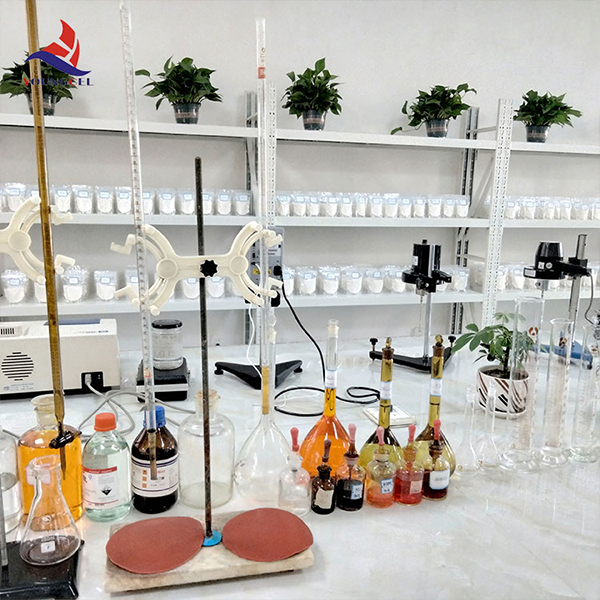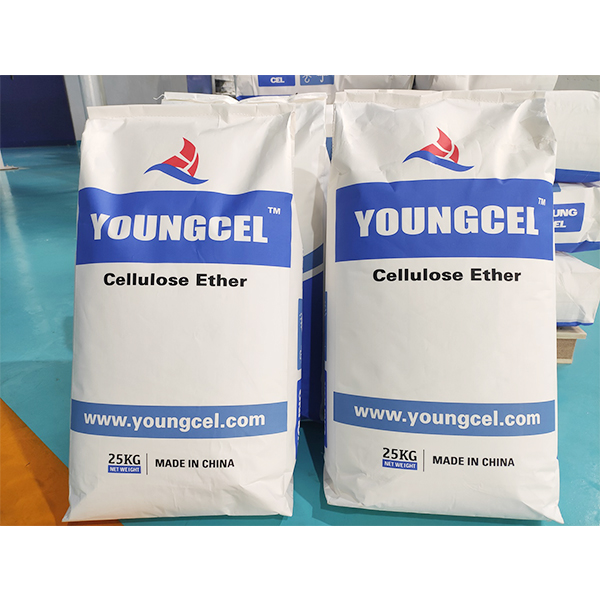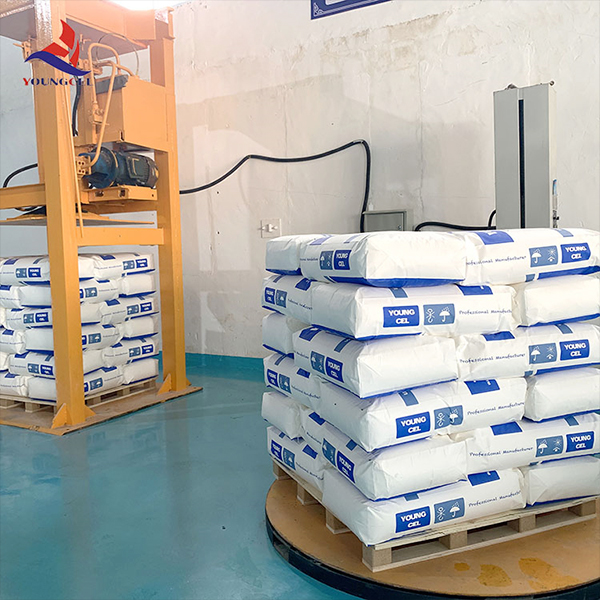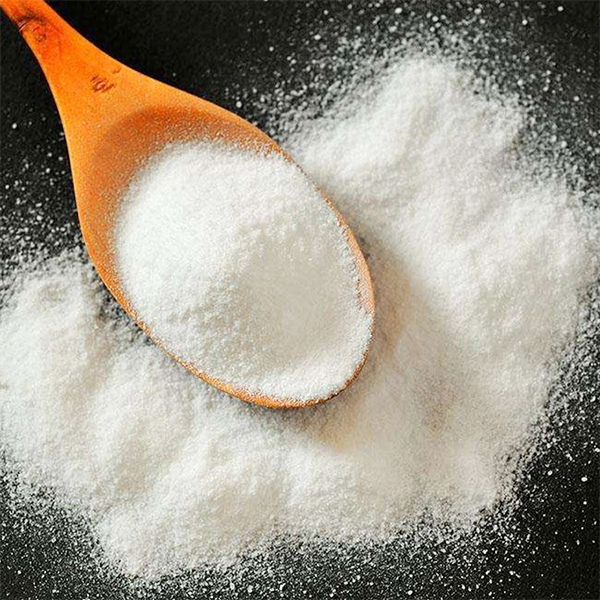The Evolving Landscape of Construction Chemicals: A 2024 Market Perspective
The global construction industry is undergoing a significant transformation, driven by demands for greater efficiency, sustainability, and performance. In this context, chemical additives have become indispensable. According to a market analysis report by Grand View Research, the global cellulose ether market size was valued at USD 5.7 billion in 2022 and is expected to grow at a compound annual growth rate (CAGR) of 5.1% from 2023 to 2030. This growth is predominantly fueled by its extensive use in the construction sector, particularly in dry mix mortar applications.
The core of this revolution lies in materials like Hpmc Cellulose Ether HPMC Construction Cellulose Ether For Tile And Dry Mix Mortar. These advanced polymers are no longer just "additives" but are now considered "enablers" of modern construction techniques. They allow for the use of large format tiles, enable efficient machine-sprayed plasters, and ensure the long-term durability of External Thermal Insulation Composite Systems (EIFS). As building standards become more stringent and architectural designs more ambitious, the reliance on high-quality, consistent HPMC will only intensify.

Technical Deep Dive: What is HPMC and Why is it Critical for Mortars?
Hydroxypropyl Methylcellulose (HPMC) is a semi-synthetic, inert, viscoelastic polymer. In layman's terms, it's a multi-functional additive derived from natural, high-purity cellulose (typically refined cotton or wood pulp). Through a sophisticated chemical process, this natural raw material is transformed into a powerful agent that profoundly impacts the properties of cement-based materials like tile adhesives and dry mix mortars.
The primary functions of Hpmc Cellulose Ether HPMC Construction Cellulose Ether For Tile And Dry Mix Mortar are rooted in its molecular structure:
- Water Retention: This is arguably the most crucial function. HPMC molecules trap a significant amount of water within the mortar mix. This prevents premature water evaporation and ensures sufficient water is available for the complete hydration of cement particles. Proper hydration is fundamental for developing strength and durability. Without adequate water retention, mortar can dry out too quickly, leading to poor adhesion, cracking, and a weak final product.
- Thickening & Anti-Sag: HPMC imparts viscosity to the mortar, giving it a rich, creamy consistency. This "body" is essential for preventing sag or slip, especially in vertical applications like tile installation. The thickening effect allows for a thicker application layer without the material sliding down the wall.
- Improved Workability (Rheology Modification): Beyond just thickening, HPMC improves the overall handling and application characteristics of the mortar. It provides a lubricating effect, making the mortar easier to mix, apply, and trowel. This leads to faster work, a smoother finish, and reduced labor fatigue.
- Enhanced Adhesion: By controlling water content and improving the plasticity of the mix, HPMC promotes a better bond between the mortar and the substrate (e.g., concrete) and the tile. It increases the "open time" – the period during which a tile can be adjusted after being placed, without compromising the final bond strength.
Unveiling the Quality: Technical Specifications of Youngcel HPMC
Transparency and data are cornerstones of trust. At Youngcel, we provide clear, verifiable specifications for our Hpmc Cellulose Ether HPMC Construction Cellulose Ether For Tile And Dry Mix Mortar, ensuring our clients know exactly what they are incorporating into their formulations. Our products are manufactured under strict ISO 9001:2015 quality management systems.
| Parameter | Specification | Significance in Application |
|---|---|---|
| Appearance | White to off-white, free-flowing powder | Indicates purity and proper processing. Ensures easy and uniform dispersion in dry mix. |
| Viscosity (Brookfield RV, 2% sol., 20°C) | 40,000 - 200,000 mPa.s | The primary indicator of thickening power. Higher viscosity provides better anti-sag properties for tile adhesives. |
| Methoxy Content (%) | 19.0 - 24.0 | These substitution degrees determine the gel temperature and solubility, impacting performance across different temperatures. |
| Hydroxypropyl Content (%) | 4.0 - 12.0 | |
| Gel Temperature (°C) | 60 - 90 | The temperature at which the solution forms a gel. A higher gel temp is desirable for applications in hot climates to maintain workability. |
| pH Value (1% solution) | 5.0 - 8.5 | Ensures compatibility with cementitious systems, which are highly alkaline. A neutral pH prevents unexpected reactions. |
| Moisture Content (%) | ≤ 5.0 | Low moisture ensures long shelf life and prevents clumping, guaranteeing accurate dosing in automated plants. |
| Particle Size | 98% pass 100 mesh | Fine particle size ensures rapid, lump-free dissolution in water, which is critical for consistent mortar quality. |

Performance Visualized: Youngcel HPMC vs. The Competition
Data tells a story. The following charts illustrate the superior performance of Youngcel's specialized Hpmc Cellulose Ether HPMC Construction Cellulose Ether For Tile And Dry Mix Mortar compared to generic or lower-grade alternatives in critical performance metrics.
Water Retention Rate Comparison (%)
Youngcel HPMC retains more water, ensuring optimal cement hydration and preventing cracks.
Open Time in C2TE Tile Adhesive (Minutes)
A longer open time provides installers more flexibility, crucial for large-format tiles.
From Raw Material to High-Performance Product: The Youngcel Manufacturing Process
The journey of our Hpmc Cellulose Ether HPMC Construction Cellulose Ether For Tile And Dry Mix Mortar begins with the highest quality raw material: high-purity refined cotton. Unlike lower-grade alternatives that may use wood pulp, refined cotton provides a superior cellulose backbone, leading to a brighter, more consistent, and higher-performing final product. Our state-of-the-art manufacturing process is governed by stringent quality controls at every stage.
Simplified Process Flowchart:
1. Refined Cotton
(High Alpha-Cellulose)2. Alkalization
(w/ NaOH)3. Etherification
(w/ CH₃Cl & PO)4. Purification
(Washing & Filtering)5. Drying & Milling
(Final Product)- Material Purity: We start with refined cotton with an alpha-cellulose content exceeding 98%, ensuring minimal impurities and maximum reaction efficiency.
- Controlled Reaction (Etherification): This is the heart of the process. We use a precise, computer-controlled reaction vessel to introduce Methyl Chloride (for Methoxy groups) and Propylene Oxide (for Hydroxypropyl groups). The ratio and reaction conditions are meticulously managed to achieve the target viscosity and gel temperature.
- Rigorous Testing: In-process and final product testing are conducted in our advanced lab. We verify viscosity, purity, particle size, and performance in a model mortar application, ensuring every batch conforms to ANSI/ISO standards.
- Designed for Durability: The resulting HPMC boasts excellent thermal and chemical stability, ensuring a long shelf life (typically 2 years under proper storage) and consistent performance in the highly alkaline environment of cement.

Application Scenarios: Where Youngcel HPMC Excels
The versatility of our Hpmc Cellulose Ether HPMC Construction Cellulose Ether For Tile And Dry Mix Mortar allows it to deliver exceptional value across a wide range of construction applications.
High-Performance Tile Adhesives (C2TE S1/S2)
In modern construction, large and heavy porcelain tiles are the norm. This demands tile adhesives with superior non-slip properties and extended open time. Our high-viscosity HPMC grades (e.g., 150,000-200,000 mPa.s) provide the necessary rheology to hold heavy tiles in place on vertical surfaces immediately after placement. The excellent water retention ensures a strong, durable bond, even on porous substrates. A client in the Middle East reported a 40% reduction in tile slippage issues on high-rise projects after switching to our custom HPMC grade.

External Thermal Insulation Composite Systems (EIFS)
EIFS base coats and adhesives require a delicate balance of properties: strong adhesion to both insulation boards (EPS/XPS) and the substrate, good workability for smooth application, and impact resistance. Our modified HPMC works synergistically with Redispersible Polymer Powders (RDP) to create a cohesive, flexible, and weather-resistant system. The result is improved energy efficiency and long-term crack resistance for buildings.
Gypsum & Cement-Based Plasters
Whether for manual application or machine spraying, our HPMC grades improve the pumpability and workability of plasters. They prevent segregation of sand and cement, reduce sagging, and allow for a smoother, defect-free final surface. This translates to faster project completion and higher quality finishes.
Customized Solutions & Expert Support
We understand that one size does not fit all. Different climates, local raw materials (sand, cement), and specific application requirements demand tailored solutions. Youngcel is more than just a supplier; we are a technical partner.
- Formulation Optimization: Our technical team can analyze your existing dry mix mortar formulation and recommend the ideal grade and dosage of Hpmc Cellulose Ether HPMC Construction Cellulose Ether For Tile And Dry Mix Mortar to achieve your desired performance targets (e.g., increasing open time, improving anti-sag).
- Custom Grade Development: For large-volume clients with unique needs, we offer the development of custom HPMC grades with specific viscosity, gel temperature, or modification levels.
- Application Testing: We can conduct laboratory tests that simulate your application conditions to validate the performance of our products in your system before you commit to large-scale production.
Building Trust: Our Commitment to Quality and Reliability
Our authority and trustworthiness are built on a foundation of certified quality, proven experience, and unwavering customer support. We are proud to be the chosen partner for leading dry mix mortar manufacturers worldwide.
ISO 9001:2015 Certified
Guaranteed Quality Management15+ Years Industry Experience
Deep Expertise in Cellulose EthersGlobal Supply Chain
Reliable Delivery WorldwideDedicated Technical Support
Your Partner in FormulationDelivery & Quality Guarantee: We typically offer a delivery lead time of 15-20 working days from order confirmation. Every shipment is accompanied by a Certificate of Analysis (COA) guaranteeing that the product meets the agreed-upon specifications. We stand by our product quality with a comprehensive warranty against manufacturing defects.

Frequently Asked Questions (FAQ)
1. What exactly is HPMC and why is it essential in dry mix mortar?
HPMC (Hydroxypropyl Methylcellulose) is a multifunctional cellulose ether derived from natural cellulose. It is essential in dry mix mortar because it acts as a water retention agent, thickener, and workability enhancer. It ensures complete cement hydration for strength, prevents sagging of tiles or plasters, and makes the mortar much easier to apply, leading to better quality and efficiency in construction.
2. How does the viscosity of Hpmc Cellulose Ether affect tile adhesive performance?
Viscosity is a measure of the thickening effect. In tile adhesives, a higher viscosity (e.g., 150,000-200,000 mPa.s) provides better "slip resistance" or "anti-sag" properties. This is critical for holding heavy, large-format tiles in place on vertical walls without them sliding down after application. Lower viscosity grades might be suitable for floor tile adhesives or grouts where sag is not a concern.
3. What is the difference between modified and unmodified HPMC?
Unmodified HPMC provides the core functions of water retention and thickening. Modified HPMC has been further chemically treated to enhance specific properties. For instance, some modifications improve slip resistance, others increase open time, and some enhance compatibility with other additives like starches or RDPs. Modified grades are often used in high-performance, specialized applications like EIFS or premium tile adhesives.
4. What is the recommended dosage of your HPMC in a typical tile adhesive formulation?
The typical dosage of Hpmc Cellulose Ether HPMC Construction Cellulose Ether For Tile And Dry Mix Mortar in a cementitious tile adhesive ranges from 0.2% to 0.5% of the total dry weight. The exact amount depends on the required properties (e.g., C1 or C2 classification), the type of local raw materials (sand and cement quality), and ambient conditions. We recommend starting with 0.35% and adjusting based on lab tests.
5. How does temperature affect HPMC performance (Gel Temperature)?
The "gel temperature" is the point at which HPMC starts to lose its water retention capability as the temperature rises. For applications in hot climates, it is crucial to select an HPMC with a high gel temperature (e.g., >75°C) to ensure the mortar remains workable and does not dry out too quickly under the sun. Our technical team can help you select the right grade for your climate.
6. Is your HPMC compatible with other additives like redispersible polymer powders (RDP)?
Absolutely. Our HPMC is designed for excellent compatibility with all common additives used in dry mix mortars, including RDPs, air-entraining agents, accelerators, and retarders. The combination of HPMC and RDP is standard in high-performance formulations, where HPMC provides workability and water retention, and RDP provides flexibility and enhanced adhesion.
7. What is the shelf life and proper storage condition for your HPMC?
Our HPMC has a guaranteed shelf life of 2 years from the date of manufacture. To ensure its quality, it should be stored in its original, unopened packaging in a dry, cool place, away from direct sunlight and moisture. Once opened, the bag should be resealed tightly to prevent moisture absorption.
Take the Next Step Towards Superior Mortar Performance
Ready to elevate the quality and consistency of your tile adhesives and dry mix mortars? The team at Youngcel is here to help. Contact us today to request a sample of our Hpmc Cellulose Ether HPMC Construction Cellulose Ether For Tile And Dry Mix Mortar, discuss your specific formulation challenges, or receive a competitive quotation.
Partner with an expert. Partner with Youngcel.
Authoritative References & Further Reading
Our commitment to expertise is backed by scientific literature and industry standards. For a deeper understanding of the role of cellulose ethers in cementitious systems, we recommend the following resources:
- Beton, T., et al. (2021). "Influence of Cellulose Ether on the Hydration and Properties of Cement-Based Mortars". Construction and Building Materials, Vol. 270. This journal article provides an in-depth analysis of the hydration kinetics. View on ScienceDirect.
- P. A. Schweitzer (2009). "Paint and Coatings: Chemistry and Technology". This book discusses the rheological impact of HPMC, which is also applicable to mineral-based plasters.
- A discussion on ResearchGate titled "How do different cellulose ethers influence fresh properties of cement paste?" offers practical insights from researchers in the field. Explore on ResearchGate.




